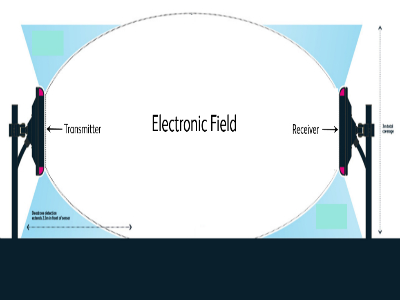Perimeter intrusion detection systems (PIDS) are prone to false alarms, which could be frustrating for those monitoring a perimeter. According to a new white paper released by Sensurity, microwave PIDS have lower false alarm rates in comparison to other systems but are still vulnerable to nuisance alarms.
Perimeter intrusion detection systems (PIDS) are prone to false alarms, which could be frustrating for those monitoring a perimeter. According to a new white paper released by Sensurity, microwave PIDS have lower false alarm rates in comparison to other systems but are still vulnerable to nuisance alarms. This not only affects the performance of the system, it can also cost the operator money. In order for a PIDS to be effective and efficient, reducing false alarms is vital.
How does a microwave PIDS work?
A microwave PIDS works by analyzing changes in the received signal between a transmitter and receiver; however, this type of system like other PIDS has suffered from false alarms, mostly due to difficulty distinguishing between animals and humans, movement of trees and foliage, as well as changing weather.
 Microwave PIDS work by analyzing changes in the received
Microwave PIDS work by analyzing changes in the received
signal between a transmitter and receiver.
“All perimeter intrusion detection (PID) systems are susceptible to false alarms caused by animals, weather, and the movement of trees and foliage and it is critical that all PID manufacturers continuously strive to lower these false alarm rates,” said George Redpath, Technical Director for Sensurity. “Even a very low perimeter nuisance alarm rate (NAR) has a severe effect on security system performance and can create headaches for operators to manage.”
So how are false alarms reduced and accuracy of PIDS increased? According to Sensurity, with the correct operating frequency, antenna, and digital signal processing (DSP) the precision of PIDS can be improved significantly.
The report points out that microwave PIDS operate by detecting motion within the electronic field generated between the system’s transmitter and receiver. An alarm is triggered when the motion disturbance is deemed to be great enough, which disturbances trigger alarms are dependent on the system’s operating frequency, antenna, and DSP.
Operating frequency
According to Sensurity’s report, the optimal operating frequency for a microwave PIDS is 5.8 GHz. At this frequency, the effects of weather on the system are greatly reduced; furthermore, the “visibility” of foliage and small animals on the microwave field are also significantly reduced.
Antenna design
A parabolic antenna is typically used in a microwave PIDS, as pointed out by the report; however, this type of antenna creates a narrow beam width in both the horizontal and vertical planes. Instead, a planar antenna array allows for different beam angles both horizontally and vertically, increasing the plane field. This allows objects in question to be viewed longer, which gives the system more time to make better informed decisions before triggering an alarm.
DSP
There are many factors that affect the amplitude and frequency of a signal. Things such as the intruding object’s size, position, speed, crossing point, and angle of movement could change a signal’s frequency. Careful analysis of different signals could allow for the development of better algorithms, which would reduce the number of false alarms.
Is there a “perfect” system?
Ultimately, the report found that a microwave PIDS operating at a frequency of 5.8 GHz, with a planar antenna, and using advanced DSP techniques, was effective in reducing the number of false alarms in perimeter security applications. Reducing the number of false alarms also opens up more potential applications for microwaves PIDS, including port applications.